Discover ABMI Data & Tools
Data Toolbox
Quick access to our data products and online reports.
Discover ABMI Data & Tools
Quick access to our data products and online reports.
Alberta’s avian diversity is a reflection of the province’s broad range of ecosystems and habitats.
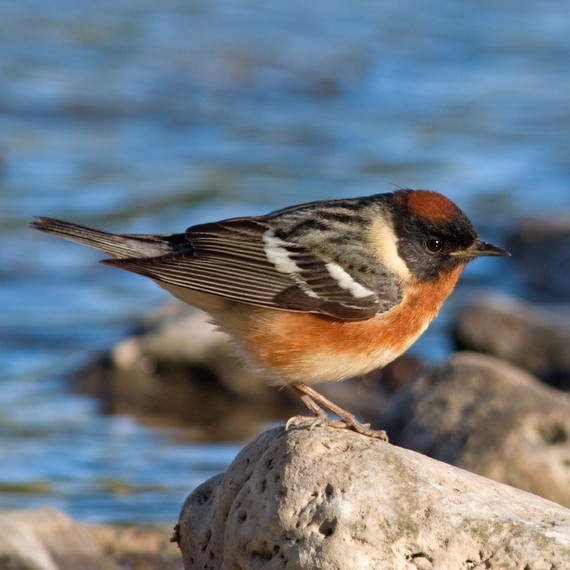 Photo Credit: Gerald A DeBoer
Photo Credit: Gerald A DeBoer
More than 80% of the Bay-breasted Warbler breeding population in the western hemisphere can be found in the boreal forest. This species is a spruce budworm specialist, increasing in abundance with budworm outbreaks
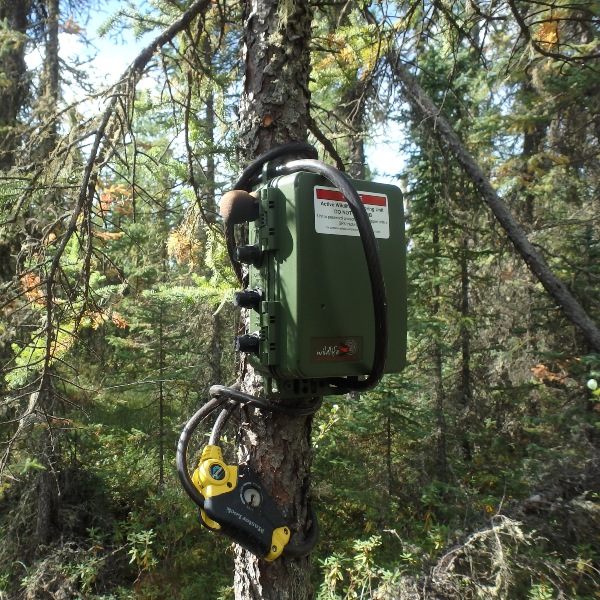 Photo Credit: Jillian Zsolt
Photo Credit: Jillian Zsolt
ARU deployed on a Black Spruce tree to monitor the acoustic environment.
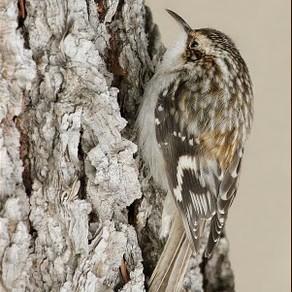 Photo Credit: Wayne Lynch
Photo Credit: Wayne Lynch
Old-forest specialists, like the Brown Creeper, respond to changes in the amount and configuration of old forest in the landscape, and are considered indicators of this habitat type.
Purpose: Compare two approaches for estimating population size for birds, and the implications for how we understand population changes over time.
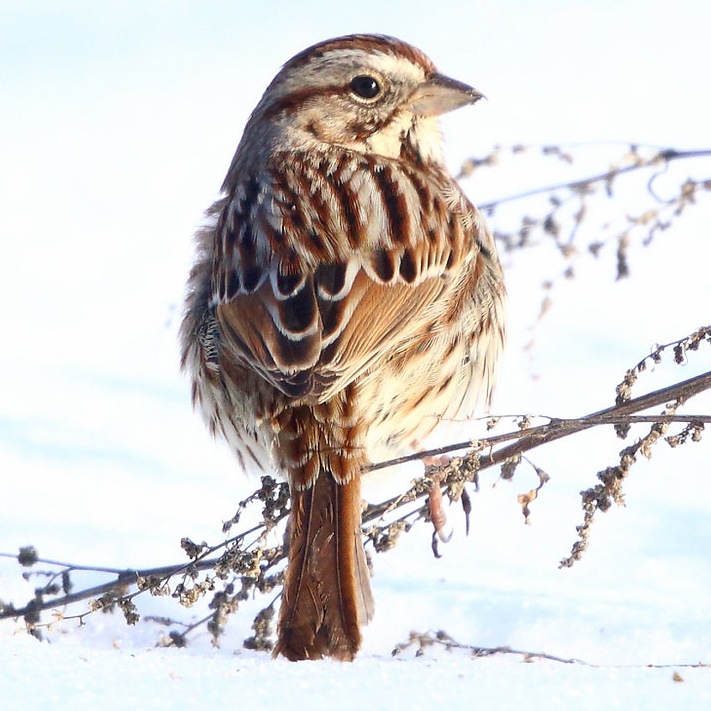
Species associated with open habitat and forest edges, like the Song Sparrow, are detected well along roads.
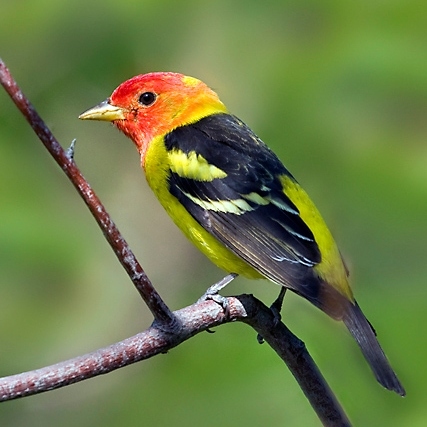
Species associated with forest interior habitat, like the Western Tanager, are under-sampled along roads.
Population estimates are important to support the conservation and management of bird species. There are several ways to estimate the size of bird populations; one popular method uses Breeding Bird Survey data, which are collected along roads. However, there are issues using roadside data to estimate bird population sizes in areas such as the boreal region, which is largely roadless. Therefore, in this project, two methods for estimating bird population sizes were compared:
For complete results see: Sólymos, P. et al. 2020[2]. This publication is a result of years of collaboration between the ABMI, the Boreal Avian Modelling (BAM) project, the Canadian Wildlife Service (Environment and Climate Change Canada), and the United States Geological Survey.
.jpg)
Lead avian ecologist
Elly is an applied ecologist interested in understanding spatial and temporal variation in avian ecology to inform when and where wildlife conservation efforts will be most effective. Elly has studied various bird species across North America and has particular interest in a group of nocturnal birds called the nightjars.
To find out more about the ABMI's bird monitoring program, please email: ecknight@ualberta.ca
Alberta Biodiversity Monitoring Institute. 2019. Terrestrial ABMI autonomous recording unit (ARU) and remote camera trap protocols 2019-12-21. Alberta Biodiversity Monitoring Institute, Alberta, Canada. Report available at: https://abmi.ca/home/publications/551-600/565
Alberta Biodiversity Monitoring Institute. 2014. Terrestrial field data collection protocols (abridged version) 2014-03-21. Alberta Biodiversity Monitoring Institute, Alberta, Canada. Report available at: https://www.abmi.ca/home/publications/1-50/46
Bayne, E., M. Knaggs, and P. Sólymos. 2017. How to most effectively use autonomous recording units when data are processed by human listeners. Bioacoustic Unit, Alberta, Canada. Report available at: https://abmi.ca/home/publications/451-500/489
Wildtrax Acoustic Platform Tutorial (2020). Tutorial available here.
_3370x2247_594x594.jpg) Photo Credit: Glenn Bartley
Photo Credit: Glenn Bartley
The Chestnut-collared Longspur is associated with native prairie habitat in southern Alberta.
Crosby, A.D., L. Leston, E.M. Bayne, P. Sólymos, C.L. Mahon, J.D. Toms, T.D.S. Docherty, and S.J. Song. 2023. Domains of scale in cumulative effects of energy sector development on boreal birds. Landscape Ecology 38:3173–3188. https://doi.org/10.1007/s10980-023-01779-8
Knight, E.C, P. Sólymos, C. Scott, and E.M. Bayne. 2020. Validation prediction: a flexible protocol to increase efficiency of automated acoustic processing for wildlife research. Ecological Applications, 30: e02140. https://doi.org/10.1002/eap.2140
Leston, L., E. Bayne, E. Dzus, P. Sólymos, T. Moore, D. Andison, D. Cheyne, and M. Carlson. 2020. Quantifying long-term bird population responses to simulated harvest plans and cumulative effects of disturbance. Frontiers in Ecology and Evolution 8:252. https://doi.org/10.3389/fevo.2020.00252
MacPhail, A.G., D.A. Yip, E.C. Knight, R. Hedley, M. Knaggs, J. Shonfield, E. Upham-Mills, and E.M. Bayne. 2024. Audio data compression affects acoustic indices and reduces detections of birds by human listening and automated recognisers. Bioacoustics, 33(1):74-90.
Yip, D.A., C.L. Mahon, A.G. MacPhail, and E.M. Bayne. 2021. Automated classification of avian vocal activity using acoustic indices in regional and heterogeneous datasets. Methods in Ecology and Evolution. https://doi.org/10.1111/2041-210X.13548
Click on the links to see additional publications by Elly Knight, Péter Sólymos, and Erin Bayne.
Made in Alberta models help continental bird conservation (2020). Blog available here.
Hudon, J., R. Klauke, M. Ross Lein, J. Riddell, B. Ritchie, G. Romanchuk and R. Wershler. 2021. Thirteenth report of the Alberta Bird Record Committee. Report available here.
Sólymos, P., J.D. Toms, S.M. Matsuoka, S.G. Cumming, N.K.S. Barker, W.E. Thogmartin, D. Stralberg, A.D. Crosby, F.V. Dénes, S. Haché, C.L. Mahon, F.K.A. Schmiegelow, and E.M. Bayne. 2020. Lessons learned from comparing spatially explicit models and the Partners in Flight approach to estimate population sizes of boreal birds in Alberta, Canada. The Condor 122(2):duaa007. https://doi.org/10.1093/condor/duaa007

.png)


